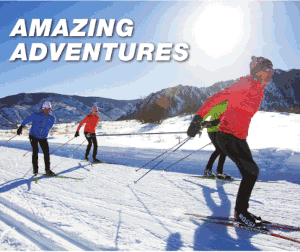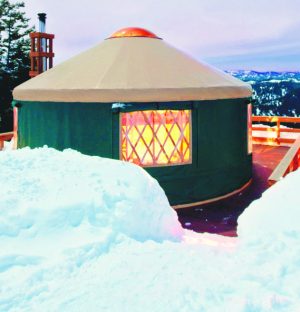October 03, 2016 (Cancun) – FIS Cross Country faced a barrage of criticism after announcing a new height limit for the length of classic ski poles following its Fall Congress in Cancun. The limit, 83% of the athletes height measured from the tip of the pole to the top of the strap on an athlete in his or her competition boots, was proposed by Andreas Schlütter, the German Ski Federation head of Cross Country and a former World Cup athlete.
“At the Congress in Cancun I suggested that we should regiment a classic pole length limit. So, at the FIS Fall meeting we established the new limit and agreed upon the rule change. We don’t want to over-regulate the sport, but we made it clear that this was for the preservation of the classic technique. There is also precedent for length limits on gear in the past. In a few years you can count on seeing a minimum length for skate skis as well,” said Schlütter on xc-ski.de.
While it is unclear whether the ruling can be changed, athletes and fans responded negatively on the FIS Cross Country Facebook page. Lukas Bauer, Olympic medalist from the Czech Republic was among those who were surprised that a ruling could be made so soon before the start of the season, despite the fact that he is notorious for using short poles in World Cup competitions. “What is quite strange is that such important decisions are done almost in front of the season (and this will be applied already this season)…:-(,” he wrote, “I think that such decision have to be done on the spring and not in front of season, because all athletes are working hard to improve their technique from the spring time and this is important part of this process….”
But FIS seems ready to stand by its decision, adding that the rule had been passed unanimously by all National Ski Associations. “Classics teams [sic] show [sic] that in steep uphills the ideal length of poles is up to 90% of body height. Whereas in flat sections it is closer to 85%. Double poling itself is not the biggest issue and the purpose of the rule is not to ban double poling. It is half skating, skating steps, etc., which is of course forbidden in classical technique competitions and give skiers unfair advantage (which is sanctioned),” according to the FIS Cross Country Facebook administrator.
It remains to be seen how National governing bodies will enforce the rules, how the poles will be measured, and how often. Stay tuned for updates.






![National camp action [P]...](https://skitrax.com/wp-content/uploads/2019/08/Duluth-4-2019-08-08-at-10.46.51-AM-300x246.png)
![Matt Liebsch on the CXC Elite Team [P] CXC...](https://skitrax.com/wp-content/uploads/2019/08/Matt-Liebsch-CXC.2-525x700.4-300x267.jpg)
![Dan LaBlanc [P]...](https://skitrax.com/wp-content/uploads/2019/08/Dan-LaBlanc-img_1855.3.jpg)

October 4th, 2016 at 9:19 am
FIS has to wake-up—xc skiing will never be the same—technology, materials, training, equipment, technique are all changing to let the skiers go faster—that’s all there is to it—-even with the new pole length they, the skiers will train it and soon it will not be a problem to dbl pole everything—-the idea is there and they will attack IT!
Now, the women, that is a different thing and the sport in regards to the difference between men and women will be more pronounced.
So, FIS, get the message—there are now 3 technique classifications—classic, skating and now DOUBLE POLING—until something new comes along?
PS–another thought—maybe it is time to do what biathlon and Nordic combined did—-ALL SKATING—THEREFORE NO CHEATING—-it is time to start to take all cheating out of skiing.
October 5th, 2016 at 4:25 pm
The FIS announced that they were going to put in a new regulation for the max height of poles for classic at 83% of your height standing in ski boots. The poles are to be measured from the tip of the pole to where the strap comes out of the handle. The main reason for this change is to stop double poling only in classic races. Now I know that I am only an n=1 but based upon my two back to back double poling workouts yesterday and today I believe that this new regulation will be an abject failure. Yesterday and today I did the same 20 km loop double poling. Yesterday I did it with 152.5 cm poles today I did it with the max allowed by the new rules for my height of 145 cm. This is not a flat loop as there is 450 meters of climb. Here are the stats from this workout Day 1 time = 1:14:05 ave hr 117 TSS 52.9 IF .62. Day 2 = 1:14:08 ave hr 122 TSS 60 IF .66. The weather conditions were essentially the same. Same wind and temperature. I believe that my higher ave hr TSS and IF was mostly due to doing double poling 2 days in a row, something that I have not done. The big point from this is 1st of all that I was still able to double pole the whole loop. Sure my technique had to change and maybe it did seem a little harder, but I am 65 years old and I can do it. I am sure that top World Cup and loppet skiers will have no trouble adapting to the shorter poles. This new regulation is hasty, not well thought through and will not work. If the FIS really wanted to shorten the poles they should have gone all the way back to the length that we used in the 1970’s and early 1980’s before skating started. Then I used 137.5 cm or 140 cm poles.
October 5th, 2016 at 8:29 pm
Jack–Good analytical process that led you to some good evaluations.
There is one thing I know—you and I are a lot smarter then those jokels at FIS—what a mess they are creating!
Definitely, there will be some fracture lines at the different levels of race organization. Do we do it—-or do we not do it—-bigger strain numbers wise to host races.
The best thing they could have done for this year is to let things go the way they were—keep good records on all races and see how bad or not bad this whole thing is and then move forward.
There will be some good yelling matches before this year is played out.Hoe there are no fisticuffs.
Have fun out there—-sleep well VU.